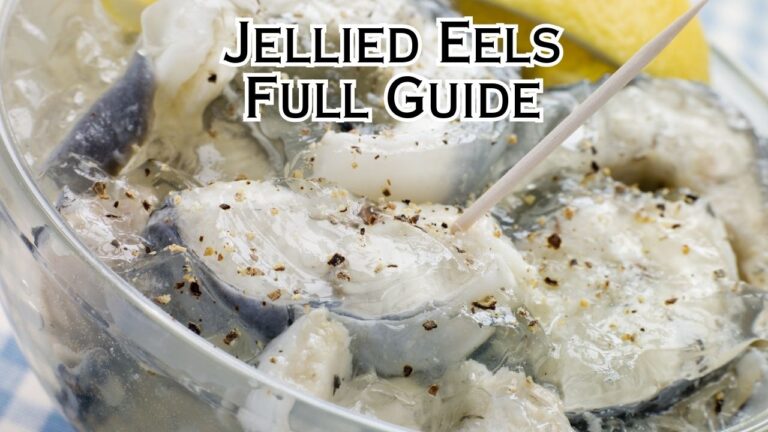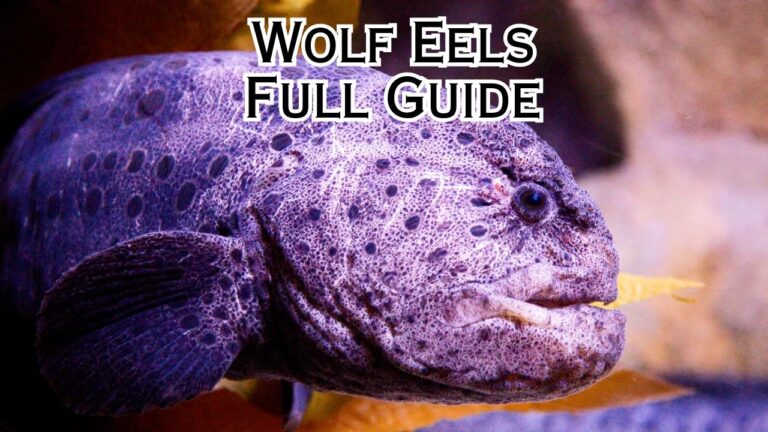
Introduction
Eels are a diverse group of elongated fish known for their serpentine bodies and intriguing behaviors. With their sinuous movements and unique adaptations, eels have captured the fascination of scientists and aquarists around the world. In this article, we will embark on a captivating journey to explore the different types of eels and unravel their distinctive features and habitats.
Anguillidae Family
The Anguillidae family is the most well-known group of eels, comprising several species found in various parts of the world. Two prominent members of this family are the European eel and the American eel.
European Eel (Anguilla anguilla)
The European eel is a highly migratory species that inhabits freshwater and coastal regions of Europe. It has a slender body and a greenish-brown coloration. European eels undertake remarkable migrations, traveling thousands of kilometers to the Sargasso Sea to spawn. They exhibit catadromous behavior, where adults migrate to the ocean for reproduction.
American Eel (Anguilla rostrata)
The American eel is native to North America and possesses similar characteristics to the European eel. It has a yellowish-brown coloration and a snake-like appearance. Like its European counterpart, the American eel also undergoes extensive migrations, with adults returning to the ocean to spawn in the Sargasso Sea.
1) Moray Eels
Moray eels belong to the family Muraenidae and are known for their elongated bodies, large mouths, and sharp teeth. They are predominantly found in tropical and subtropical waters, hiding within crevices and coral reefs.
Moray eels are a fascinating group of predatory fish known for their elongated bodies, open mouths filled with sharp teeth, and incredible diversity of species. In this article, we will delve into the world of moray eels, exploring various types including the Giant Moray Eel, Green Moray Eel, Fimbriated Moray Eel, Zebra Moray Eel, Snyder’s Moray Eel, Snowflake Moray Eel, and Slender Giant Moray. Each of these species possesses unique characteristics, habitats, and behaviors that make them truly captivating.
Giant Moray Eel (Gymnothorax javanicus)
The Giant Moray Eel, scientifically known as Gymnothorax javanicus, is one of the largest species of moray eels. It can reach lengths of up to 10 feet and is recognized for its impressive size, muscular body, and mottled brown or green coloration. The Giant Moray Eel is commonly found in coral reefs and rocky areas of the Indo-Pacific region. It is a voracious predator, feeding on a diet of fish, cephalopods, and crustaceans.
Green Moray Eel (Gymnothorax funebris)
The Green Moray Eel, scientifically known as Gymnothorax funebris, is a striking species known for its vibrant green coloration and powerful jaws. It inhabits the warm coastal waters of the western Atlantic Ocean, including the Caribbean Sea. The Green Moray Eel is highly adaptable and can be found in various habitats, such as coral reefs, mangroves, and rocky crevices. It feeds primarily on fish and crustaceans.
Fimbriated Moray Eel (Gymnothorax fimbriatus)
The Fimbriated Moray Eel, scientifically known as Gymnothorax fimbriatus, is a visually captivating species characterized by its intricate pattern of dark spots and lines on a light background. It is found in the tropical waters of the Indo-Pacific region, particularly around coral reefs and rocky areas. The Fimbriated Moray Eel is slender and feeds on small fish, crustaceans, and mollusks.
Zebra Moray Eel (Gymnomuraena zebra)
The Zebra Moray Eel, scientifically known as Gymnomuraena zebra, is an extraordinary species known for its striking black and white striped pattern. It is native to the Indo-Pacific region, particularly the coral reefs of the Red Sea and the Indian Ocean. The Zebra Moray Eel prefers shallow, sandy habitats where it can burrow and hide. Its diet primarily consists of small fish, crustaceans, and cephalopods.
Snyder’s Moray Eel (Gymnothorax Snyderi)
Snyder’s Moray Eel, scientifically known as Gymnothorax Snyderi, is a rare and lesser-known species found in the eastern Pacific Ocean. It has a robust body with a mottled brown or gray coloration. Snyder’s Moray Eel prefers rocky areas and is often found in crevices and caves. Its diet includes a variety of marine organisms such as fish, crustaceans, and mollusks.
Snowflake Moray Eel (Echidna nebulosa)
The Snowflake Moray Eel, scientifically known as Echidna nebulosa, is a visually stunning species characterized by its intricate pattern of white spots against a dark background. It is found in the Indo-Pacific region, particularly around coral reefs. The Snowflake Moray Eel is nocturnal and spends most of its time hiding in crevices or caves. Its diet mainly consists of small fish and crustaceans.
Slender Giant Moray (Strophidon sathete)
The Slender Giant Moray, scientifically known as Strophidon sathete, is a rare and elusive species found in the Indian and Pacific Oceans. It has a long, slender body with a unique color pattern of dark spots and lines on a light background. The Slender Giant Moray is typically found in deep, rocky habitats and feeds on various marine organisms, including fish and cephalopods.
2) Electric Eels
Electric eels belong to the family Electrophoridae and possess a remarkable ability to generate electric shocks for defense and hunting purposes. They are native to the freshwater habitats of South America.
Electric Eel (Electrophorus electricus)
The electric eel is an extraordinary creature capable of producing strong electric discharges. It can reach lengths of up to 8 feet and possesses specialized organs called electrocytes that generate electric fields. These electric discharges are primarily used to navigate, locate prey, and deter potential threats.
3) Conger Eels
Conger eels are members of the family Congridae and are found in both temperate and tropical waters. They have long bodies and are known for their voracious appetites.
Conger eels are a diverse group of elongated fish that belong to the family Congridae. They are known for their snake-like appearance, impressive size, and unique adaptations. In this article, we will explore different types of conger eels, including the Conger Eel, Beach Conger Eel, Grey Conger, Whitespotted Conger, and Longfin African Conger. Each species has its own distinct characteristics, habitats, and behaviors that make them intriguing and noteworthy.
Conger Eel (Conger conger)
The Conger eel, scientifically known as Conger conger, is a widely recognized species found in the eastern Atlantic Ocean and the Mediterranean Sea. It is one of the largest eel species, capable of growing up to 10 feet in length. The Conger eel has a cylindrical body covered in smooth skin and a mottled brown or gray coloration. It inhabits rocky areas and wrecks, preying on various fish, crustaceans, and cephalopods.
Beach Conger Eel (Conger beachi)
The Beach Conger eel, scientifically known as Conger beachi, is a species that primarily inhabits the Indian and Pacific Oceans. It has a slender body with a distinctive pattern of black spots on a light background. The Beach Conger eel is typically found in shallow coastal waters, including sandy and rocky areas. It feeds on small fish, crustaceans, and other invertebrates.
Grey Conger (Conger cinereus)
The Grey Conger, scientifically known as Conger cinereus, is a species native to the eastern Atlantic Ocean and the Mediterranean Sea. It has a robust body with a grayish coloration and a series of dark spots along its sides. The Grey Conger prefers rocky habitats and depths ranging from shallow waters to around 650 feet. Its diet consists of various fish species and crustaceans.
Whitespotted Conger (Conger myriaster)
The Whitespotted Conger, scientifically known as Conger myriaster, is a visually striking eel species found primarily in the coastal waters of the western Pacific Ocean. It has a slender body with a dark brown or black coloration adorned with distinct white spots. The Whitespotted Conger inhabits rocky reefs and feeds on a diet consisting of fish and crustaceans.
Longfin African Conger (Conger cinereus)
The Longfin African Conger, scientifically known as Conger cinereus, is a species native to the eastern Atlantic Ocean and the Mediterranean Sea. It is characterized by its elongated body and long, ribbon-like fins. The Longfin African Conger can reach lengths of up to 6 feet and is commonly found in rocky or sandy habitats. Its diet primarily consists of small fish and benthic invertebrates.
4) Snake Eels (Ophichthidae)
Ophichthidae is a family of eels commonly known as snake eels. They are found in both freshwater and saltwater environments, with a wide distribution across the world’s oceans. Snake eels have elongated bodies and are well adapted to burrowing in sandy or muddy substrates. They primarily feed on small fish, crustaceans, and worms.
Tiger Snake Eel (Myrichthys tigrinus)
The tiger snake eel is a visually striking species with a pattern of black and yellow stripes along its body. It can grow up to 2 feet in length and is known for its burrowing behavior. Tiger snake eels spend most of their time hidden beneath the sandy substrate, waiting for unsuspecting prey to pass by.
Ocellated Snake Eel (Ophichthus ocellatus)
The ocellated snake eel is a fascinating species with a unique color pattern of dark spots or ocelli on a light background. It can reach lengths of up to 3 feet and is often found in shallow coastal waters. Ocellated snake eels primarily feed on small fish and crustaceans, ambushing them from their burrows.
5) Garden Eels
Garden eels belong to the family Congridae and are known for their peculiar behavior of burrowing into sandy or muddy seabeds, resembling a garden of swaying plants.
Spotted Garden Eel (Heteroconger hassi)
The spotted garden eel is a charming species with a slender body and a pale yellow coloration. It has small black spots covering its body, giving it a speckled appearance. Spotted garden eels form colonies in sandy areas near coral reefs, where they feed on planktonic organisms drifting in the water.
Blackspotted Garden Eel (Gorgasia preclara)
The blackspotted garden eel is a visually captivating species with a cream-colored body adorned with distinct black spots. It can reach lengths of up to 16 inches and is commonly found in sandy habitats. Blackspotted garden eels are sensitive creatures, retracting into their burrows at the slightest hint of danger.
Snipe Eel (Nemichthys scolopaceus)
The snipe eel, also known as the snipefish, is an intriguing species found in both deep-sea and shallow waters. It has a long, slender body and a pointed snout. Snipe eels are primarily scavengers, feeding on carrion and small invertebrates. They are known for their unusual elongated jaws, which allow them to capture prey efficiently.
Sawtooth Eel (Serrivomeridae)
The sawtooth eel is a unique eel family known for their distinctive saw-like teeth and elongated bodies. They are mostly found in deep-sea habitats, where they feed on small fish and invertebrates. Sawtooth eels play an important role in the deep-sea ecosystem as both predator and scavenger.
Cutthroat Eel (Synaphobranchidae)
Cutthroat eels belong to the family Synaphobranchidae and are characterized by a distinct red coloration on their throat area. They are predominantly found in deep-sea environments, living at depths of thousands of feet. Cutthroat eels have long bodies and slender jaws, allowing them to capture small fish and invertebrates.
Conclusion
The world of eels is a diverse and captivating realm, showcasing the wonders of nature’s evolutionary processes. From the migratory European eel to the electric shocks of the electric eel, and the secretive behaviors of moray, conger, snake, and garden eels, each type offers unique adaptations and intriguing characteristics. Exploring the different types of eels provides us with a deeper understanding of the incredible diversity that exists within our oceans and waterways.






